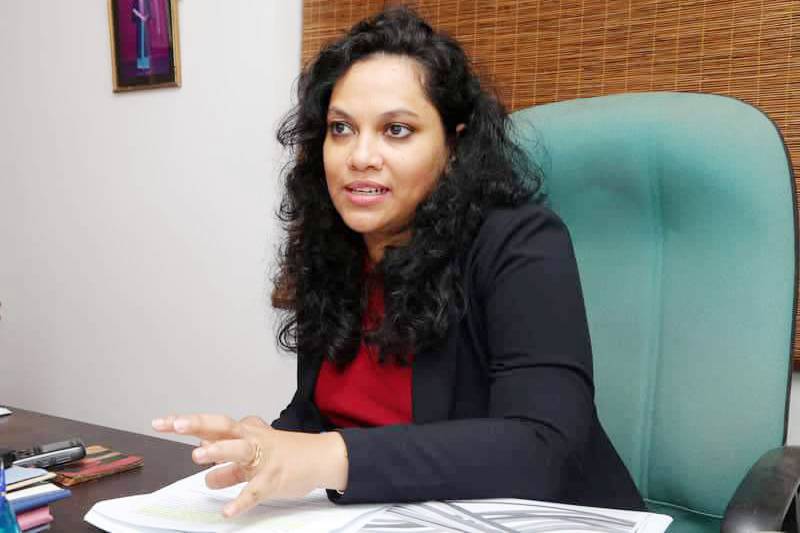On 25 September 2015, at the 70th session of the United Nations (UN) General Assembly in New York, 193 countries adopted a new development agenda, the Sustainable Development Goals (SDGs). The new development framework is expected to inform the development planning processes of member states until 2030 and serve as a benchmark for assessing development outcomes of member states in the post-Millennium Development Goals (MDG) phase.
Sri Lanka’s commitment to achieving the SDGs was implicit with its participation and becoming an important stakeholder in the global consultation process leading to the formulation of the SDGs framework. This commitment was expressly stated at the General Assembly sessions in 2015 but also more recently, by President Gotabaya Rajapaksa in his inaugural speech in Anuradhapura when he stated that his Government will be fully committed to achieving the UN SDGs. The SDGs find recognition in the national policy framework of the Government titled, “Vistas for Prosperity and Splendour”.
However, five years after this new development framework has become a global reality, the discussions surrounding the SDG framework in Sri Lanka have been confined to technical experts and/or environmentalists failing to transcend the boundaries to evolve to a transformative agenda encompassing the whole of government and society. As such, most of the public discourses or pronouncements relating to SDGs seem to be marred by a few common misconceptions.
In this article, my aim is to clarify a few commonly held misconceptions in order to generate a proper understanding of the SDG framework among a lay audience.
Myth 1: A UN agenda
SDGs are often referred to as the development agenda of the UN. However, in reality, it is a framework negotiated by the member states of the UN through the platforms and offices offered by the UN to enable member states to negotiate their interests and aspirations relating to development.
The global consultations relating to a new development framework post-MDG phase commenced with the 2012 UN Conference on Sustainable Development, popularly known as Rio+20 Summit in Rio de Janeiro, where member state governments resolved to launch a process to develop a set of SDGs to build upon the MDGs and converge into a post-2015 development agenda. The summit also resulted in a focused political outcome document containing clear and practical measures for implementing sustainable development.
The global consultation process recognised the importance of community participation and inclusivity in development processes. Drawing from the failures of the previous development agenda – the MDGs – the 2015 agenda formulation adopted and followed a more inclusive approach where national dialogues were carried out in 13 countries with the participation of approximately 4,200 participants from national and local institutions.
The intergovernmental negotiation process of the post-2015 development agenda culminated in an outcome document entitled “Transforming Our World: The 2030 Agenda for Sustainable Development”, which was agreed by consensus at the informal meeting of the Plenary in August 2015 and was later adopted by the General Assembly (comprising of member states) on 25 September 2015.
The SDGs constitute an essential part of our national policy framework “Vistas for Prosperity and Splendour” in as much as there is close convergence among the global goals and policy objectives to be realised.
Myth 2: Sustainable development framework is about environmental sustainability
While the concept of sustainable development originated as far back as 1987 with the report of the World Commission on Environment and Development (WCED) titled “Our Common Future” (also known as the Brundtland Report) which aimed to discuss environment and development as one single issue, the Agenda 2030 on SDGs presents a broader framework straddling across multiple sectors such as education, health, agriculture, nutrition, etc. It introduced 17 development goals with 169 development targets to be measured through 244 indicators. The transition from MDGs to SDGs denotes an expansion on the emphasis placed on environment sustainability, gender empowerment, peace, and governance in development objectives.
The SDGs agenda is as much about ending poverty, eliminating malnutrition, ensuring decent work for all, ending violence against women and children, and fighting corruption, among others. It brings together the different dimensions of development, economy, society, and environment. The overarching framework of the agenda rests on economic progress underlined by strong environmental safeguards and held together by the glue of “peaceful and inclusive societies for sustainable development”. Simply put, the Agenda 2030 emphasises the holistic development of the person, community, and society at large.
Furthermore, the tagline “leave no one behind” emphasises that development progress needs to be equitable in as much as all communities need to benefit from our development outcomes equally regardless of race, religion, ethnicity, gender, geographical location, etc.
And finally, sustainable development is about development that meets the needs of the present generation without compromising the ability of future generations to meet their own needs.
As stated at the outset, my aim here is to clarify some of the commonly held misconceptions about the 2030 Agenda for sustainable development particularly among the non-subject specialists. In what follows, I will discuss, in brief, the progress of implementation of the SDGs in Sri Lanka.
(The writer is a lawyer and an international development specialist having over 15 years of work experience in the development sector. She holds a Master’s in International Development Studies from the Graduate Institute of International and Development Studies in Geneva)

